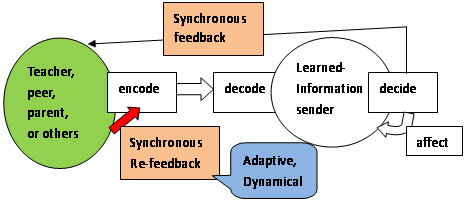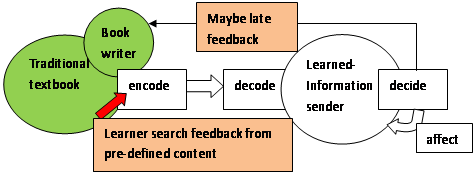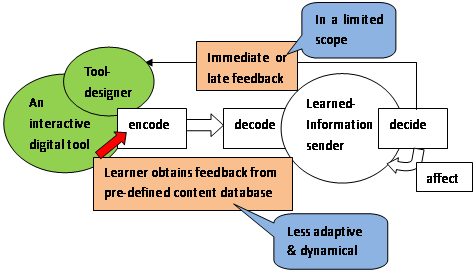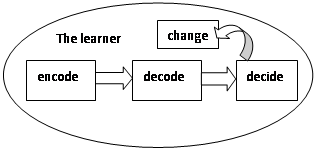| |
10.2 A communication model
A model of learning: Learning is the communication between a learner and information.

Information might be from a person (the learner himself or another person), or from a media (textbook, digital tools etc.) Receiving information is the process of decoding, and then the learner decides the further thoughts/actions/emotions based on the decoded information.
A few sources of information will be illustrated in the following situations of communication.

Situation 1:
the sender is different from the receiver, which might be a teacher, peer, parent or any other person. In this case, the feedback might transform a sender. The exchange of information and interaction are adaptive, flexible, and dynamical. This is the reason why good teachers & peers cannot be completely replaced by intelligent tools that are less adaptive and flexible.

Situation 2:
the sender is a traditional textbook. The feedback might affect the sender in a lag-time-period. This again supports that idea that even there are great textbooks, a learner often needs good teachers and peers. Nevertheless, great textbooks can be extremely helpful to teaching and learning.

Situation 3: the sender might be a digital tool, then the feedback might affect the sender either synchronously (at the same time) or asynchronously (in different time).

Situation 4:
the sender is the receiver, which means that the formation travels inside the learner. (self-thinking, self-reflection, transfer/translating between communication models.)
- Login to post comments
